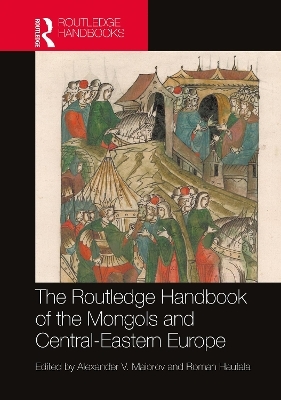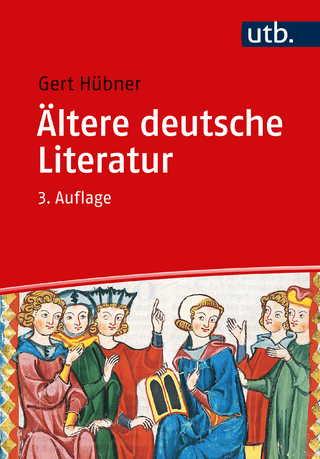
The Routledge Handbook of the Mongols and Central-Eastern Europe
Routledge (Verlag)
978-1-032-04423-1 (ISBN)
The Routledge Handbook of the Mongols and Central-Eastern Europe offers a comprehensive overview of the Mongols’ military, political, socio-economic and cultural relations with Central and Eastern European nations between the thirteenth and fifteenth centuries.
The Mongol Empire was the largest contiguous land empire in history, and one which contributed to the establishment of political, commercial and cultural contacts between all Eurasian regions. The Golden Horde, founded in Eastern Europe by Chinggis Khan’s grandson, Batu, in the thirteenth century, was the dominant power in the region. For two hundred years, all of the countries and peoples of Central and Eastern Europe had to reckon with a powerful centralized state with enormous military potential. Some chose to submit to the Mongols whilst others defended their independence, but none could avoid the influence of this powerful empire. In this book, twenty-five chapters examine this crucial period in Central-Eastern European history, including trade, confrontation, and cultural and religious exchange between the Mongols and their neighbours.
This book will be an essential reference for scholars and students of the Mongols, as well those interested in the political, social and economic history of medieval Central-Eastern Europe.
Alexander V. Maiorov is Professor and Head of the Department of Museology at St. Petersburg State University, Russia. Roman Hautala is a Docent in the Department of History at University of Oulu, Finland.
Introduction Part I: Before and after the Great Western Campaign 1. Omens of the Apocalypse: The First Rus’ Encounter with the Mongols through the Prism of the Medieval Mind 2. Diplomacy, War, and a Witch: Peace Negotiations before the Mongol Invasion of Rus’ 3. The Mongol Invasions of Poland in the Thirteenth Century. The Current State of Knowledge and Perspectives for Future Research 4. Mongol Inroads into Hungary in the Thirteenth Century: Investigating Some Unexplored Avenues 5. The Bohemian Kingdom and the Mongol ʻInvasionʼ of 1241 Part II: The Mongols and Central Europe 6. Mongol Attack on the Upper Hungary in 1285 7. Mongol-Hungarian Encounters in the Fourteenth Centuries 8. The Polish-Mongol Conflict over Succession of the Halych and Volhynian Principality in the Middle of the Fourteenth Century Part III: The Mongols and Southeastern Europe 9. Byzantium and the Mongol World: Contacts and Interaction (from Batu to Tamerlane) 10. A Century of the Tatars ‘Hegemony’: the Golden Horde and Bulgarian Lands (1241–1341) Part IV: The Golden Horde and Russia 11. Basqaqs in Rus’: Social Strategy of Power 12. From Supreme Judge to Arbitrator: Conflicts of Rus’ Princes under the Golden Horde Khans’ Trial (Case Studies) 13. The Muscovite Rus’ and the Tatar States in the Second Half of the Fifteenth Century: The Main Trends of Relations 14. The Turks in the Grand Principality of Moscow: Migrations, Services, Material Allowance Part V: The Golden Horde and Lithuania 15. The Lithuanians and the Tatars: Confrontation from a Safe Distance and Vested Interests in the Common Ground 16. A Lithuanian Embassy in the Golden Horde in 1348: The Background and Consequences 17. Expansion of the Grand Duchy of Lithuania in the Middle and the Second Half of the Fourteenth Century and Its Relations with the Horde 18. The Grand Duchy of Lithuania, the Kingdom of Poland, and the Tatar World in the Fifteenth Century Part VI: Trade and Economic Relations 19. The Economics of Mongol Rule in Rus’, 1237–1350 20. Armenian Diasporas between the Golden Horde, Rus’, and Poland: Long-Distance Trade and Diplomatic Services 21. Genoa and Venice in the Golden Horde: Politics, Trade, and Society Part VII: Cultural Exchange and Church-Religious Interaction 22. Alexander the Great and Other Personages in the ‘Tale of the Battle against Mamai’ 23. From monstrous creatures to neighboring humans: image of the Mongols in the European book miniatures of the thirteenth-sixteenth centuries 24. Between the Politics of Accommodation and Independence: Rus’, the Mongols, and the Church, 1237–1350 25. Islamization of the Golden Horde during the Özbeg Khan’s Rule according to Muslim, Latin and Rus’ian Sources
| Erscheinungsdatum | 06.08.2021 |
|---|---|
| Reihe/Serie | Routledge History Handbooks |
| Zusatzinfo | 1 Tables, black and white; 38 Halftones, black and white; 38 Illustrations, black and white |
| Verlagsort | London |
| Sprache | englisch |
| Maße | 174 x 246 mm |
| Gewicht | 1010 g |
| Themenwelt | Geschichte ► Allgemeine Geschichte ► Mittelalter |
| Geschichte ► Teilgebiete der Geschichte ► Kulturgeschichte | |
| ISBN-10 | 1-032-04423-3 / 1032044233 |
| ISBN-13 | 978-1-032-04423-1 / 9781032044231 |
| Zustand | Neuware |
| Haben Sie eine Frage zum Produkt? |
aus dem Bereich


